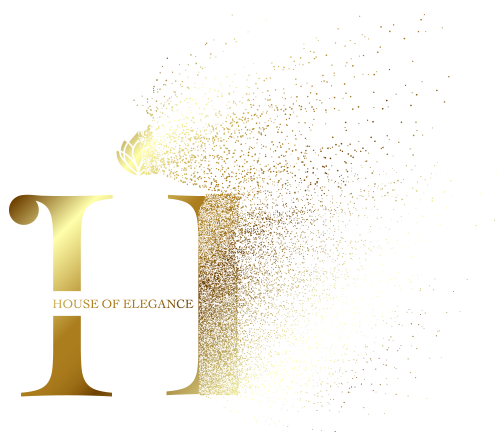Business, Business, Business, Business, Business, Business, Business, Business, Business, Business, Business, Business, Business, Business, Business, Business, Business, Business, Business, Business, Business, Business, Business, Business, Business, Business, Business, Business, Business, Business, Business, Business, Business, Business, Business, Business, Business, Business, Business, Business, Business, Business, Business, Business, Business, Business, Business, Business, Business, Business, Business, Business, Business, Business, Business, Business, Business, Business, Business, Business, Business, Business, Business, Business, Business, Business, Business, Business, Business, Business, Business, Business, Business, Business, Business, Business, Business, Business, Business, Business, Business, Business, Business, Business, Business, Business, Business, Business, Business, Business, Business, Business, Business, Business, Business, Business, Business, Business, Business, Business, Business, Business, Business, Business, Business, Business, Business, Business, Business, Business, Business, Business, Business, Business, Business, Business, Business, Business, Business, Business, Business, Business, Business, Business, Business, Business, Business, Business, Business, Business, business, Business, Business, Business, Business, Business, Business, Business, Business, Business, Business, Business, Business, Business, Business, Business, Business, Business, Business, Business, Business, Business, Business, Business, Business, Business, Business, Business, Business, business, Business, Business, Business, Business, Business, Business, Business, Business, Business, Business, Business, Business, Business, Business, Business, Business, Business, Business, Business, Business, Business, Business, Business, Business, Business, Business, Business, Business, Business, Business, Business, Business, Business, Business, Business, Business, Business, Business, Business, Business, Business, Business, Business, Business, Business, Business, Business, Business, Business, Business, Business, Business, Business, Business, Business, Business, Business, Business, Business, Business, Business, Business, Business, Business, Business, Business, Business, Business, Business, Business, Business, Business, Business, Business, Business, Business, Business, Business, Business, Business, Business, Business, Business, Business, Business, Business, Business, Business, Business, Business, Business, Business, Business, Business, Business, Business, Business, Business, Business, Business, Business, Business, Business, Business, Business, Business, Business, Business, Business, Business, Business, Business, Business, Business, Business, Business, Business, Business, Business, Business, Business, Business, Business, Business, Business, Business, Business, Business, Business, Business, Business, Business, Business, Business, Business, Business, Business, Business, Business, Business, Business, Business, Business, Business, Business, Business, Business, Business, Business, Business, Business, Business, Business, Business, Business, Business, Business, Business, Business, Business, Business, Business, Business, Business, Business, Business, Business, Business, Business, Business, Business, Business, Business, Business, Business, Business, Business, Business, Business, Business, Business, Business, Business, Business, Business, Business, Business, Business, Business, Business, Business, Business, Business, Business, Business, Business, Business, Business, Business, Business, Business, Business, Business, Business, Business, Business, Business, Business, Business, Business, Business, Business, Business, Business, Business, Business, Business, Business, Business, Business, Business, Business, Business, Business, Business, Business, Business, Business, Business, Business, Business, Business, Business, Business, Business, Business, Business, Business, Business, Business, Business, Business, Business, Business, Business, Business, Business, Business, Business, Business, Business, Business, Business, Business, Business, Business, Business, Business, Business, Business, Business, Business, Business, Business, Business, Business, Business, Business, Business, Business, Business, Business, Business, Business, Business, Business, Business, Business, Business, Business, Business, Business, Business, Business, Business, Business, Business, Business, Business, Business, Business, Business, Business, Business, Business, Business, Business, Business, Business, Business, Business, Business, Business, Business, Business, Business, Business, Business, Business, Business, Business, Business, Business, Business, Business, Business, Business, Business, Business, Business, Business, Business, business, Business, Business, Business, Business, Business, Business, Business, Business, Business, Business, Business, Business, Business, Business, Business, Business, Business, Business, Business, Business, Business, Business, Business, Business, Business, Business, Business, Business, Business, Business, Business, Business, Business, Business, Business, Business, Business, Business, Business, Business, Business, Business, Business, Business, Business, Business, Business, Business, Business, Business, Business, Business, Business, Business, Business, Business, Advertising, Business, Advertising, Business, Advertising, Business, Advertising, Business, Advertising, Business, Advertising, Business, Advertising, Business, Advertising, Business, Advertising, Business, Advertising, Business, Advertising, Business, Advertising, Business, Advertising, Business, Advertising, Business, Article Marketing, Business, Article Marketing, Business, Article Marketing, Business, Article Marketing, Business, Article Marketing, Business, Article Marketing, Business, Article Marketing, Business, Article Marketing, Business, Article Marketing, Business, Article Marketing, Business, Article Marketing, Business, Careers, Business, Careers, Business, Careers, Business, Customer Service, Business, Customer Service, Business, Customer Service, Business, Customer Service, Business, Customer Service, Business, Customer Service, Business, Customer Service, Business, Customer Service, Business, Customer Service, Business, Customer Service, Business, Customer Service, Business, Customer Service, Business, Entrepreneurs, Business, Entrepreneurs, Business, Entrepreneurs, Business, Entrepreneurs, Business, Entrepreneurs, Business, Home Based Business, Business, Home Based Business, Business, Home Based Business, Business, Home Based Business, Business, Home Based Business, Business, Home Based Business, Business, Home Based Business, Business, Home Based Business, Business, Home Based Business, Business, Marketing, Business, Marketing, Business, Marketing, Business, Marketing, Business, Marketing, Business, Marketing, Business, Marketing, Business, Marketing, Business, Marketing, Business, Marketing, Business, Marketing, Business, Marketing, Business, Marketing, Business, Marketing, Business, Marketing, Business, Marketing, Business, Marketing, Business, Marketing, Business, Marketing, Business, Marketing, Business, Sales, Business, Sales, Business, Sales, Business, Sales, Business, Sales, Business, Sales, Business, Sales, Business, Sales, Business, Sales, Business, Sales, Business, Small Business, Business, Small Business, Business, Small Business, Business, Small Business, Business, Small Business, Business, Small Business, Internet Business, Affiliate Programs, Internet Business, Affiliate Programs, Internet Business, Audio-Video Streaming, Internet Business, Audio-Video Streaming, Internet Business, Blogging, Internet Business, Blogging, Internet Business, Blogging, Internet Business, Blogging, Internet Business, Blogging, Internet Business, Blogging, Internet Business, Domains, Internet Business, Domains, Internet Business, Ebooks, Internet Business, Ebooks, Internet Business, Ecommerce, Internet Business, Ecommerce, Internet Business, Ecommerce, Internet Business, Ecommerce, Internet Business, Ecommerce, Internet Business, Email Marketing, Internet Business, Email Marketing, Internet Business, Email Marketing, Internet Business, Email Marketing, Internet Business, Internet Marketing, Internet Business, Internet Marketing, Internet Business, Internet Marketing, Internet Business, Internet Marketing, Internet Business, Internet Marketing, Internet Business, Podcasts, Internet Business, Podcasts, Internet Business, Security, Internet Business, Security, Internet Business, Security, Internet Business, Security, Internet Business, Security, Internet Business, SEO, Internet Business, SEO, Internet Business, SEO, Internet Business, SEO, Internet Business, Site Promotion, Internet Business, Site Promotion, Internet Business, Site Promotion, Internet Business, Web Design, Internet Business, Web Design, Internet Business, Web Design, Page, Internet, Business, Marketing, Life, Other, Company, People, Computers, Public, Worldwide, Shop, Blog, Writer, AI, Tehnologies, Computers, Finance, Page, Internet, Business, Marketing, Life, Other, Company, People, Computers, Public, Worldwide, Shop, Blog, Writer, AI, Tehnologies, Computers, Finance
Futures Trading vs. Options Trading: A Comparative Analysis
On this planet of financial markets, trading instruments come in varied shapes and sizes, every catering to completely different risk appetites and investment objectives. Among the hottest are futures and options contracts, each offering unique opportunities for traders to take a position on value movements. Nevertheless, understanding the differences between these two derivatives is essential for making informed investment decisions. In this article, we will conduct a comparative analysis of futures trading versus options trading, exploring their mechanics, risk profiles, and suitability for different trading strategies.
Definition and Mechanics
Futures contracts are agreements to purchase or sell an asset at a predetermined value on a specified date in the future. These contracts are standardized and traded on organized exchanges, such as the Chicago Mercantile Exchange (CME) or the Intercontinental Exchange (ICE). Futures trading includes the obligation to fulfill the contract at the agreed-upon terms, regardless of the market price at expiration.
Options contracts, alternatively, provide the customer with the precise, but not the duty, to buy (call option) or sell (put option) an undermendacity asset at a predetermined worth (strike value) within a specified period. Options are traded each on exchanges and over-the-counter (OTC) markets, providing flexibility in terms of contract customization. Unlike futures, options trading offers the holder the selection to train the contract or let it expire worthless.
Risk Profile
One of the key distinctions between futures and options trading lies in their risk profiles. Futures trading carries unlimited risk and profit potential, as traders are obligated to fulfill the contract regardless of the undermendacity asset’s price movement. If the market moves towards the position, traders could incur substantial losses, especially if leverage is involved. However, futures contracts additionally supply the opportunity for significant returns if the market moves within the trader’s favor.
Options trading, on the other hand, provides a defined risk-reward profile. Since options buyers have the correct but not the obligation to exercise the contract, their maximum loss is limited to the premium paid. This makes options an attractive tool for risk management and hedging strategies, permitting traders to protect their positions in opposition to adverse value movements while maintaining the potential for profit. Nonetheless, options trading typically entails lower profit potential compared to futures, because the premium paid acts as a cap on potential gains.
Leverage and Margin Requirements
Both futures and options trading supply leverage, allowing traders to control a larger position with a comparatively small amount of capital. Nonetheless, the mechanics of leverage differ between the 2 instruments. In futures trading, leverage is inherent, as traders are required to put up an initial margin deposit to enter into a position. This margin quantity is typically a fraction of the contract’s total value, permitting traders to amplify their exposure to the undermendacity asset. While leverage can magnify returns, it also increases the potential for losses, as even small value movements can lead to significant features or losses.
Options trading also includes leverage, however it shouldn’t be as straightforward as in futures trading. The leverage in options is derived from the premium paid, which represents a fraction of the underlying asset’s value. Since options buyers have the appropriate but not the obligation to exercise the contract, they’ll control a bigger position with a smaller upfront investment. Nevertheless, options sellers (writers) are subject to margin requirements, as they have the obligation to fulfill the contract if assigned. Margin requirements for options sellers are determined by the exchange and are based mostly on factors comparable to volatility and the undermendacity asset’s price.
Suitability and Trading Strategies
The selection between futures and options trading is determined by various factors, including risk tolerance, market outlook, and trading objectives. Futures trading is well-suited for traders seeking direct publicity to the undermendacity asset, as it affords a straightforward mechanism for taking bullish or bearish positions. Futures contracts are commonly utilized by institutional investors and commodity traders to hedge in opposition to value fluctuations or speculate on future worth movements.
Options trading, alternatively, provides a wide range of strategies to accommodate completely different market conditions and risk profiles. Options can be used for speculation, hedging, earnings generation, and risk management. Common options strategies embody covered calls, protective puts, straddles, and strangles, every providing a novel combination of risk and reward. Options trading appeals to a diverse range of traders, including retail investors, institutions, and professional traders, as a consequence of its versatility and customizable nature.
Conclusion
In abstract, futures and options trading are both well-liked derivatives instruments offering opportunities for traders to profit from value movements in financial markets. While futures trading entails the obligation to fulfill the contract at a predetermined worth, options trading provides the fitting, however not the duty, to buy or sell the undermendacity asset. The selection between futures and options depends on factors reminiscent of risk tolerance, market outlook, and trading objectives. Whether seeking direct publicity or employing sophisticated trading strategies, understanding the mechanics and risk profiles of futures and options is essential for making informed investment selections in right this moment’s dynamic monetary markets.
If you cherished this article therefore you would like to be given more info pertaining to 해외선물 먹튀업체 nicely visit our own web site.

